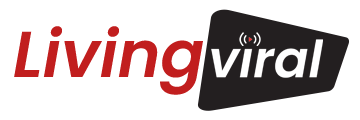
Table of Contents
Patient compliance is a crucial factor in achieving positive health outcomes. It refers to the extent to which patients follow treatment plans recommended by healthcare providers. Unfortunately, low compliance rates remain a persistent challenge in healthcare, leading to increased healthcare costs and suboptimal patient outcomes. In this blog post, we will explore the most important factors that can affect patient compliance and provide practical recommendations for healthcare providers to improve patient adherence to treatment plans. From effective communication and patient education to the role of technology and building trust, we will examine the latest research and best practices for promoting patient compliance.
Factors Affecting Patient Compliance
Compliance can be affected by several factors, including:
- Patient age: Older patients may have difficulties with treatment compliance due to forgetfulness, physical limitations, or cognitive impairments. Younger patients may struggle with compliance due to their busy schedules or lack of concern for their health.
- Health literacy: Patients with low health literacy may find it challenging to understand complex medical information, leading to confusion and noncompliance.
- Cultural background: Patients from different cultural backgrounds may have beliefs or practices that clash with their treatment plan or cause them to prefer alternative treatments.
- Socioeconomic status: Patients from low-income households may struggle to afford medication or transportation to appointments, leading to noncompliance.
Understanding these factors can guide healthcare providers in tailoring treatment plans and providing appropriate support to improve compliance rates. Patient engagement and shared decision-making can also play a role in boosting compliance.
Effective communication for patient compliance
Clear and concise communication between healthcare providers and patients is critical for improving compliance. It is important for healthcare providers to use plain language, avoid medical jargon, and actively listen to patients to ensure they understand treatment plans.
Incorporating visual aids, such as diagrams or videos, can also enhance patient understanding and promote compliance. Healthcare providers should use teach-back methods, asking patients to repeat or demonstrate what they have learned, to confirm their understanding of the treatment plan.
Providers should also encourage patients to ask questions and clarify any doubts they may have about the treatment or medication. It is important to establish a comfortable and safe environment for patients to feel empowered to ask questions or provide feedback about their care.
How to motivate patients to comply with treatment plans
Compliance with healthcare treatment plans is essential for achieving positive patient outcomes. However, some patients may struggle with adherence due to a variety of reasons. Here are some strategies healthcare providers can use to motivate patients to comply with their treatment plans:
Provide education about the benefits of treatment
Many patients may not understand why they need to follow a treatment plan or may underestimate the impact it can have on their health. Providers should take the time to educate patients on the benefits of their treatment and how following the plan can improve their condition and quality of life.
Break down treatment plans into manageable steps
Patients may feel overwhelmed or discouraged if their treatment plan seems too complex or difficult to follow. Providers can help motivate patients by breaking the plan down into smaller, manageable steps that the patient can focus on one at a time.
Set achievable goals
Setting achievable goals can help patients feel motivated and accomplished as they work towards compliance. Providers should work collaboratively with patients to set realistic goals that are achievable with their lifestyle and resources.
Offer incentives and rewards
Incentives and rewards can be powerful motivators for patients. Providers can offer positive reinforcement for following the treatment plan, such as praise, small gifts, or other incentives that are meaningful to the patient.
By employing these strategies, healthcare providers can help motivate patients to comply with their treatment plans and achieve better health outcomes.
Overcoming Barriers to Patient Compliance
Despite the best efforts of healthcare providers, patients may encounter barriers that prevent them from adhering to their treatment plans. Identifying and addressing these barriers is key to improving compliance rates and patient outcomes.
Financial Concerns
One common barrier to compliance is financial concerns. Patients may struggle to afford medication, medical equipment, or necessary tests. Providers can help address this barrier by connecting patients with financial assistance programs, discussing more affordable treatment options, and working with insurance providers to ensure coverage of necessary care.
Transportation Issues
For some patients, transportation can be a significant barrier to adherence. Providers can work with patients to identify transportation options, such as public transportation or ride-sharing services, and connect them with resources to help cover the cost of transportation.
Medication Side Effects
Medication side effects can also affect patient compliance. Providers should work with patients to identify alternative medications, adjust dosages, or provide additional support to manage side effects and promote adherence.
Technology-Related Barriers
While technology can enhance patient compliance, it can also pose barriers for some patients. Providers should consider patients’ technological literacy and access to devices when incorporating technology into their treatment plans. They should also ensure that technology does not replace human interaction and support, and that patients’ privacy is protected.
Addressing Barriers
Despite these barriers, healthcare providers have many tools at their disposal to help patients overcome obstacles to compliance. By working collaboratively with patients and addressing their individual needs and concerns, providers can improve patient outcomes and promote long-term health.
The Role of Technology in Enhancing Patient Compliance
Technology has the potential to greatly enhance patient compliance by providing tools and resources to support adherence to treatment plans. Here are some ways technology can be used:
Wearable Devices and Apps
Wearable devices, such as fitness trackers, can monitor patient activity levels and provide reminders or incentives to promote adherence to treatment plans. Mobile apps can also be used to send notifications or provide educational resources to patients.
Telehealth
Telehealth involves the use of technology, such as video conferencing or messaging platforms, to provide remote healthcare services. This can improve access to care and support for patients who may have difficulty attending in-person appointments.
Patient Portals
Patient portals allow patients to access their health records, communicate with their healthcare providers, and schedule appointments online. This can facilitate communication and collaboration between patients and providers, which can improve compliance.
It is important to consider patient preferences and ensure technology does not replace human interaction or compromise patient privacy. Providers should also ensure patients have access to the necessary technology and resources to fully utilize these tools.
The impact of patient education on compliance rates
For patients to comply with their treatment plans, they need to have a good understanding of their condition and the recommended treatment options. Patient education plays a critical role in improving compliance rates.
Interactive educational tools, such as videos or games, may be more engaging for patients and enhance their knowledge and motivation to comply. These tools can explain complicated medical concepts in an easy-to-understand language and provide patients with the information needed to make informed treatment decisions.
It is essential to tailor educational materials to patients’ health literacy levels and cultural backgrounds to maximize their effectiveness. Healthcare providers should also engage in shared decision-making with patients, involving them in their care and treatment decisions. This collaboration supports a sense of ownership and investment in their health, leading to better compliance rates.
The importance of patient-physician trust in improving compliance
Establishing trust between patients and healthcare providers is critical in improving patient compliance. Patients who trust their physicians are more likely to follow treatment plans and adhere to medication regimens.
One way to build trust is by actively involving patients in their care and treatment decisions. This can give patients a sense of ownership and investment in their health and motivate them to comply with treatment plans.
Another way to promote trust is by building rapport with patients. Healthcare providers should take the time to listen to patients’ concerns and questions and address them in a transparent and respectful manner.
Regular communication between providers and patients can also help build trust. Providers should keep patients informed about their condition and treatment options and be available to answer questions or provide support.
By prioritizing trust and collaboration, healthcare providers can create a foundation for successful treatment and improved patient compliance.
Measuring and tracking patient compliance: Best practices
Measuring and tracking patient compliance is essential for healthcare providers to assess the effectiveness of treatment plans and identify areas for improvement. Here are some best practices:
Use validated tools
Validated tools, such as questionnaires or medication adherence charts, can be used to monitor compliance rates. Providers should select tools based on their validity and reliability.
Regularly review and discuss compliance data with patients
Discussing compliance data with patients can help identify potential barriers to compliance, such as medication side effects or financial concerns. Providers should collaboratively adjust treatment plans to address these barriers.
Identify successes and challenges
Tracking compliance rates allows providers to identify successes and challenges in patients’ adherence to treatment plans. Celebrating successes can motivate patients to continue adhering, while addressing challenges can help solve any issues that may be hindering compliance.
Collaborate with the patient
Collaborating with the patient throughout the measurement and tracking process can help build trust and improve communication. Patients can provide valuable feedback on treatment plans and any challenges they may be facing.
By measuring and tracking patient compliance, healthcare providers can identify areas for improvement and work collaboratively with patients to ensure they are adhering to their treatment plans.
Conclusion
In conclusion, patient compliance is a crucial aspect of healthcare that impacts patient outcomes and overall quality of care. Understanding the various factors that influence compliance, such as patient age, health literacy, and cultural background, can guide healthcare providers in developing individualized treatment plans and providing appropriate support to improve compliance rates. Effective communication, patient education, and trust-building are also key elements in promoting compliance. Technology can be a valuable tool in enhancing compliance, but it should not replace human interaction or compromise patient privacy. Emphasizing patient engagement, education, and collaboration is essential for achieving optimal results and improving patient outcomes. By employing these best practices, healthcare providers can provide better quality care to their patients and achieve better results.
Read Also:
Can you have physical therapy while in hospice?
What Is the Difference Between Hospice Care and Long-Term Care?
